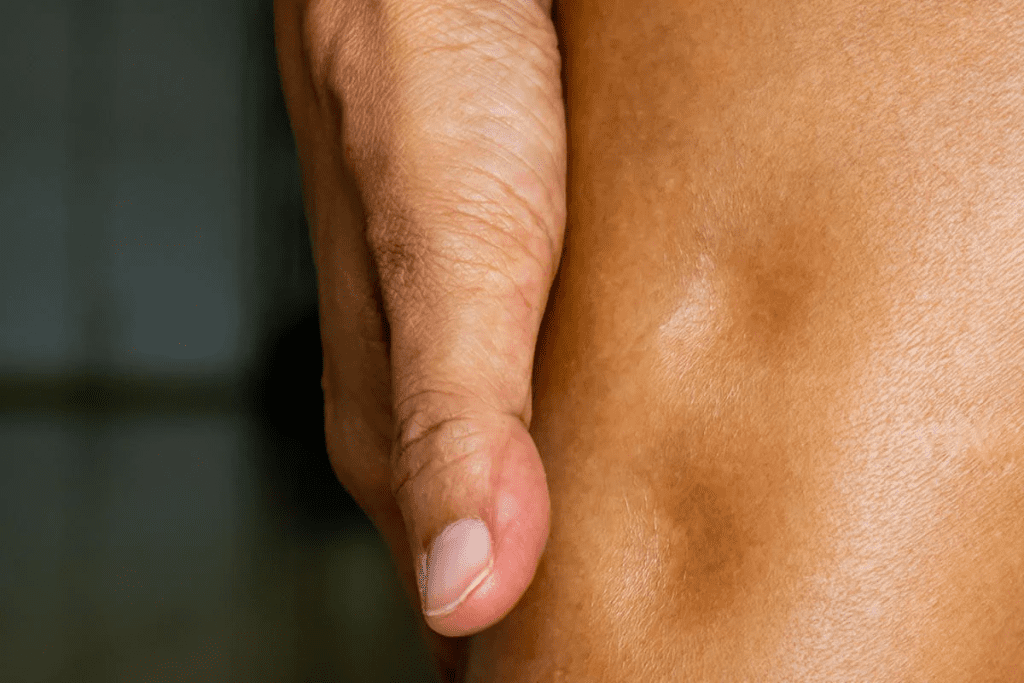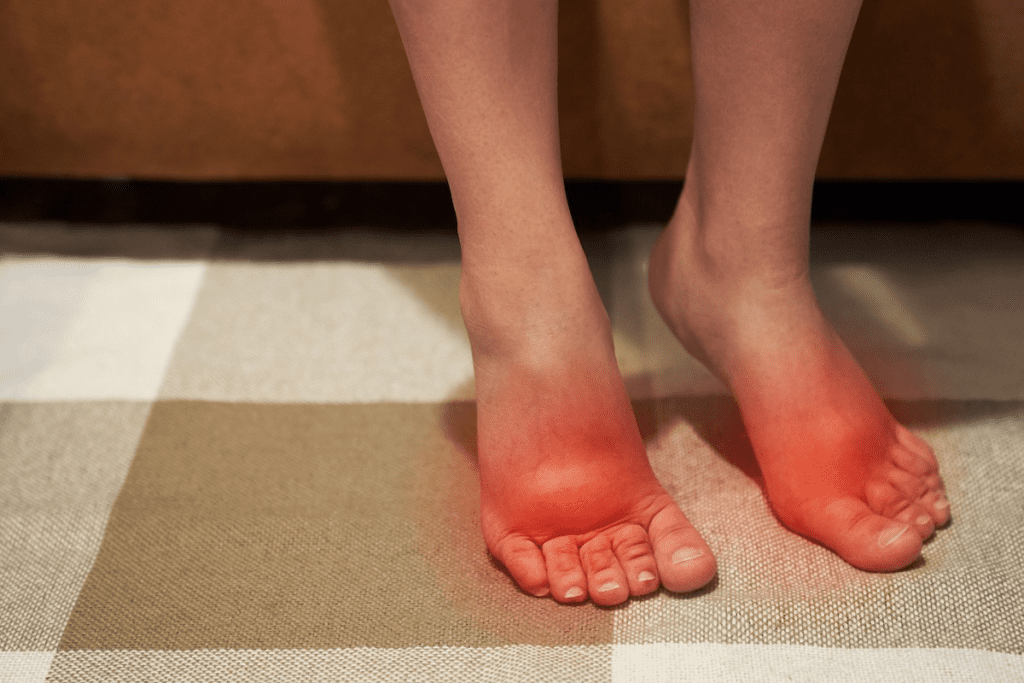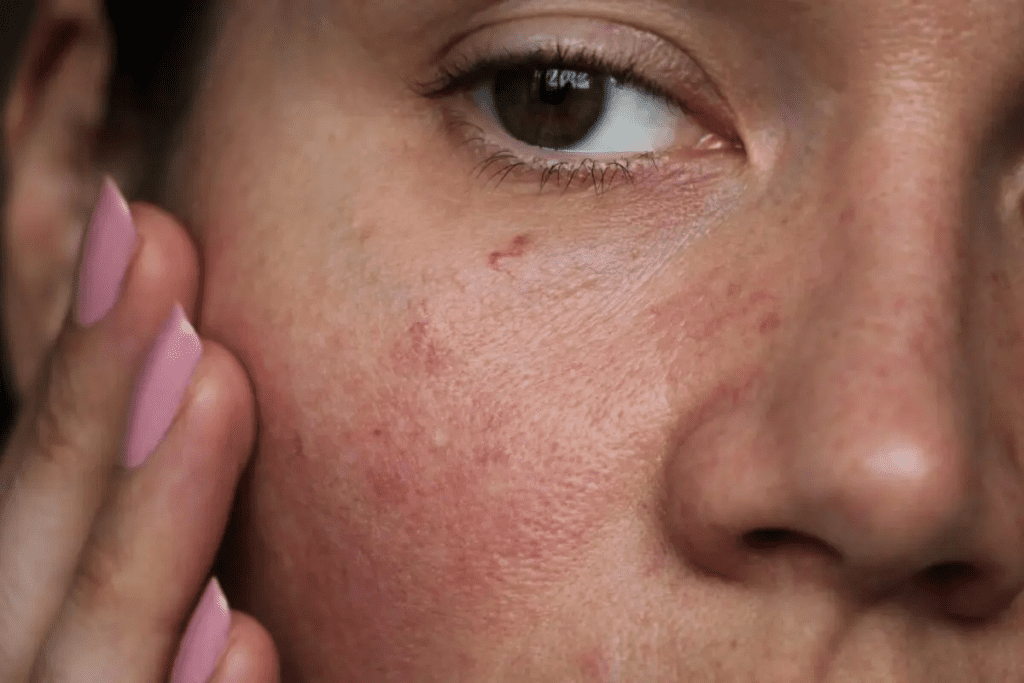Last Updated on November 25, 2025 by
Shockwave therapy, also known as Extracorporeal Shock Wave Therapy (ESWT), is a non-invasive treatment. It uses shock waves to help heal and reduce pain in musculoskeletal conditions. While it’s generally safe, many ask, can shockwave therapy cause damage as recent research has shown several drawbacks.

ESWT has become popular for treating musculoskeletal issues. But patients need to know about the risks and side effects it can cause. The success of ESWT depends on the treatment plan and the patient’s health, making it important to understand its limits.
ESWT is a non-invasive treatment that uses high-energy sound waves. It helps heal and reduce pain in different areas. It’s known for treating many musculoskeletal issues.
Shockwave therapy sends short, high-energy sound waves to certain body parts. This boosts the body’s healing process by improving blood flow and repairing tissues. A special device creates these shockwaves and targets them at specific areas.

ESWT is used for many musculoskeletal problems, like plantar fasciitis and tendinitis. It also helps with chronic pain from tennis elbow and shoulder tendinitis. It’s praised for reducing pain, inflammation, and improving function without surgery.
ESWT is safe when done by a trained healthcare professional. It’s non-invasive, which lowers the risk of complications. But, like any treatment, it can have side effects and things it shouldn’t be used for. Common side effects are mild and short-term, like pain, swelling, or redness.
Overall, ESWT is a good option for treating musculoskeletal issues. It’s safe and effective, making it a better choice than invasive procedures.
Patients getting ESWT might feel some common side effects. These are usually short-lived and can be managed. ESWT is safe but can cause mild issues in 20-25% of people. Knowing about these side effects helps make better choices and care for patients.
Pain is a common side effect of shockwave therapy. The shockwaves can be uncomfortable during treatment. Post-treatment pain is also possible, but it’s usually mild and goes away in a few days.
Swelling and skin redness are common, too. The area might get inflamed because of increased blood flow. Applying ice packs after treatment can help lessen these effects.

Bruising can happen because of the shockwaves damaging small blood vessels. The area might feel tender to the touch. These effects are usually short-lived.
Some people might feel numbness or tingling after ESWT. These feelings are usually mild and go away quickly.
In summary, shockwave therapy has several common side effects, but they are usually mild and short-lived. Knowing about these side effects helps patients prepare and manage them well.
It’s important to know the risks of shockwave therapy before deciding to use it. While it’s mostly safe, shockwave therapy can have serious side effects. Both patients and doctors need to understand these risks.
Tendon rupture is a rare but serious side effect of ESWT (Extracorporeal Shock Wave Therapy). It shows the need for choosing the right patients and planning treatments carefully. High-energy shockwaves can cause tendon rupture.
Shockwave therapy can also lead to stress fractures and other bone problems. The strong shockwaves can stress bones, causing fractures. This is more likely in people with bone issues or osteoporosis.
Osteonecrosis, or bone tissue death, is a rare but serious risk. It can cause long-term pain and may need surgery. This is a rare but serious side effect.
While serious side effects from shockwave therapy are rare, it’s important to know about them. Studies and trials help us understand how safe ESWT is. This helps manage what patients expect and ensures they give informed consent.
In summary, shockwave therapy is mostly safe but has serious risks. These include tendon rupture, stress fractures, and osteonecrosis. Knowing about these risks is essential for safe and effective treatment.
It’s important to know when shockwave therapy is not safe. This treatment, also known as Extracorporeal Shock Wave Therapy (ESWT), is used for many muscle and bone problems. But it’s not right for everyone because of certain health issues.
Pregnant women should not get shockwave therapy. The high-energy waves could hurt the baby. So, it’s best to avoid this treatment in the belly and lower back areas during pregnancy.
People with cancer in the area to be treated should not get shockwave therapy. It might make the cancer grow or spread. It’s important to tell your doctor if you’ve had cancer before getting ESWT.
Those with blood-clotting problems or taking blood thinners should be careful. Shockwave therapy could make bleeding or bruising worse. Doctors need to think carefully about the risks and benefits before treating these patients.
Getting steroid injections recently in the treatment area is a no-go for shockwave therapy. Steroids can weaken tendons, and ESWT could make them break. There should be a good amount of time between steroid shots and ESWT.
In short, shockwave therapy is not for everyone. It’s not good for pregnant women, people with cancer, those with blood-clotting issues, or those who’ve had steroid injections recently. Doctors need to know these things to make sure treatment is safe and works well.
Doctors can make better choices about shockwave therapy by knowing these no-go areas. This helps avoid risks and makes treatment better for patients.
Shockwave therapy is promising for many muscle and bone issues. But there are certain body parts it can’t treat. Knowing these limits is key.
One big rule is to stay away from air-filled parts like lungs and intestines. Shockwaves near these areas can cause harm. Doctors must check the area carefully to avoid problems.
Another thing to watch out for is metal implants or prosthetics. Shockwaves can mess with these, leading to pain or other issues. Doctors will check each case to see if it’s safe to treat.
Age is important when thinking about shockwave therapy. Kids under 18 are usually treated with extra care. Their growing bodies might react differently, so doctors often look for other options.
Some tissues don’t do well with shockwave therapy. For example, areas with poor circulation or pre-existing tissue damage might not be good candidates. Doctors need to check the tissue’s condition before treating.
In short, shockwave therapy is helpful but has its limits. Knowing these limits helps doctors use them safely and effectively.
It’s important to manage shockwave therapy side effects well. Knowing what precautions to take can help avoid problems. This way, patients can get the most out of the therapy.
Before starting shockwave therapy, tell your doctor about all medications and health conditions. Proper preparation can lower the chance of side effects. Also, follow any special instructions from your doctor, like avoiding certain foods or activities.
During the treatment, you can do things to feel more comfortable. You might want to adjust the intensity of the shockwaves or take breaks. Using deep breathing can also help. Talking to your doctor about any discomfort is key to making adjustments.
After the treatment, follow the care instructions from your doctor. This might include using ice to reduce swelling or avoiding hard activities for a while. Proper post-treatment care can greatly reduce the risk of problems.
Most side effects are mild and go away on their own. But sometimes you need to see a doctor right away. Look for signs like severe pain, big swelling, or trouble moving the area. Knowing when to seek help is key to avoiding serious issues.
By following these tips and talking openly with your doctor, you can handle and lessen the side effects of shockwave therapy. This makes the treatment more effective.
ESWT is a promising treatment, but its success can vary. Knowing what affects its success is key for both patients and doctors.
The success of ESWT depends on several things. The condition being treated, its severity, and the patient’s health are important. For example, chronic conditions might need more sessions, while acute injuries might heal faster with fewer treatments.
People react differently to ESWT, just like they do to medicines. Age, lifestyle, and genetics can affect how well someone responds to the therapy.
For example, younger patients might heal faster and respond more effectively to ESWT compared to older adults.
Research on ESWT is growing, but there are limits and disagreements. More studies are needed to fully understand its benefits.
Patients are expected to have realistic hopes. ESWT is not a quick fix and might need several sessions. Knowing what to expect can help manage hopes and improve the treatment experience.
By understanding the variability in ESWT’s success, patients can make better choices. Doctors can then tailor treatments more effectively.
Shockwave therapy, or Extracorporeal Shock Wave Therapy (ESWT), is a popular treatment for many muscle and bone issues. It’s seen as safe and effective, but it’s important to know its possible downsides. This knowledge helps patients make smart choices.
Side effects of shockwave therapy can be mild or serious. It’s key to know when it’s not safe, like during pregnancy or with certain health issues. Also, using it incorrectly can lead to harm. So, picking the right patients and planning treatments carefully is essential.
It’s wise for patients to talk to doctors at trusted clinics that follow proven methods. This way, they get ESWT that fits their needs best, reducing risks and increasing benefits. Understanding both the good and bad of shockwave therapy helps patients make the best treatment choices.
Side effects include pain, swelling, and bruising. You might also feel numbness or tingling. These effects are usually mild and short-lived.
Yes, it can cause serious damage like tendon rupture or stress fractures. Osteonecrosis is also a rare risk. Always talk to a healthcare professional about these risks.
Don’t get it if you’re pregnant or have cancer in the area. Blood clotting disorders and recent steroid injections are also no-gos. Some anatomical conditions might also be contraindications.
Follow pre-treatment advice and stay comfortable during treatment. Post-treatment care is also key. Always listen to your healthcare professional’s advice.
Some people might feel pain or discomfort. But it’s usually manageable with the right care and precautions.
Avoid it if you’re pregnant, have cancer, or have blood-clotting disorders. Recent steroid injections are also a no. Certain medical conditions or body types might also need to steer clear.
No, it has limits. Avoid air-filled tissues and organs. Metal implants and certain tissues are also off-limits.
Effectiveness varies. It depends on the condition and your health. Always discuss expectations with a healthcare professional.
Yes, patients under 18 might face age restrictions. Treatments in younger patients should be cautious.
You might see swelling or bruising. But these usually go away on their own. Follow post-treatment care to ease any discomfort.
Subscribe to our e-newsletter to stay informed about the latest innovations in the world of health and exclusive offers!